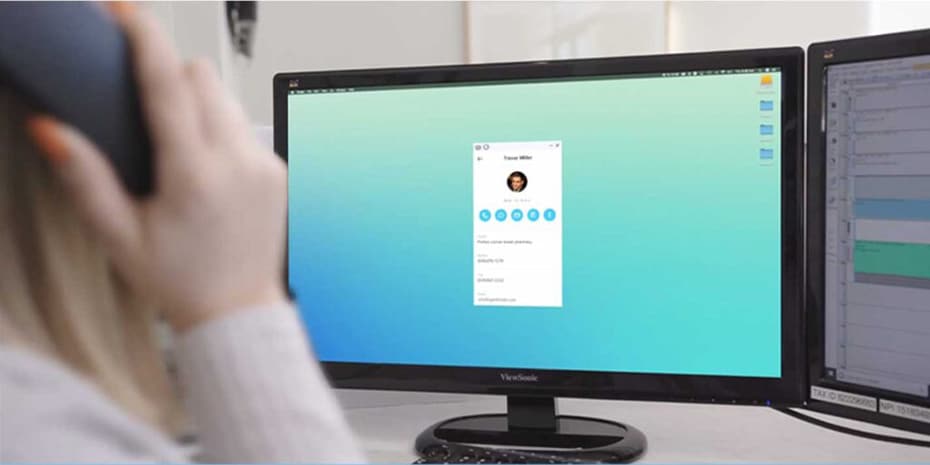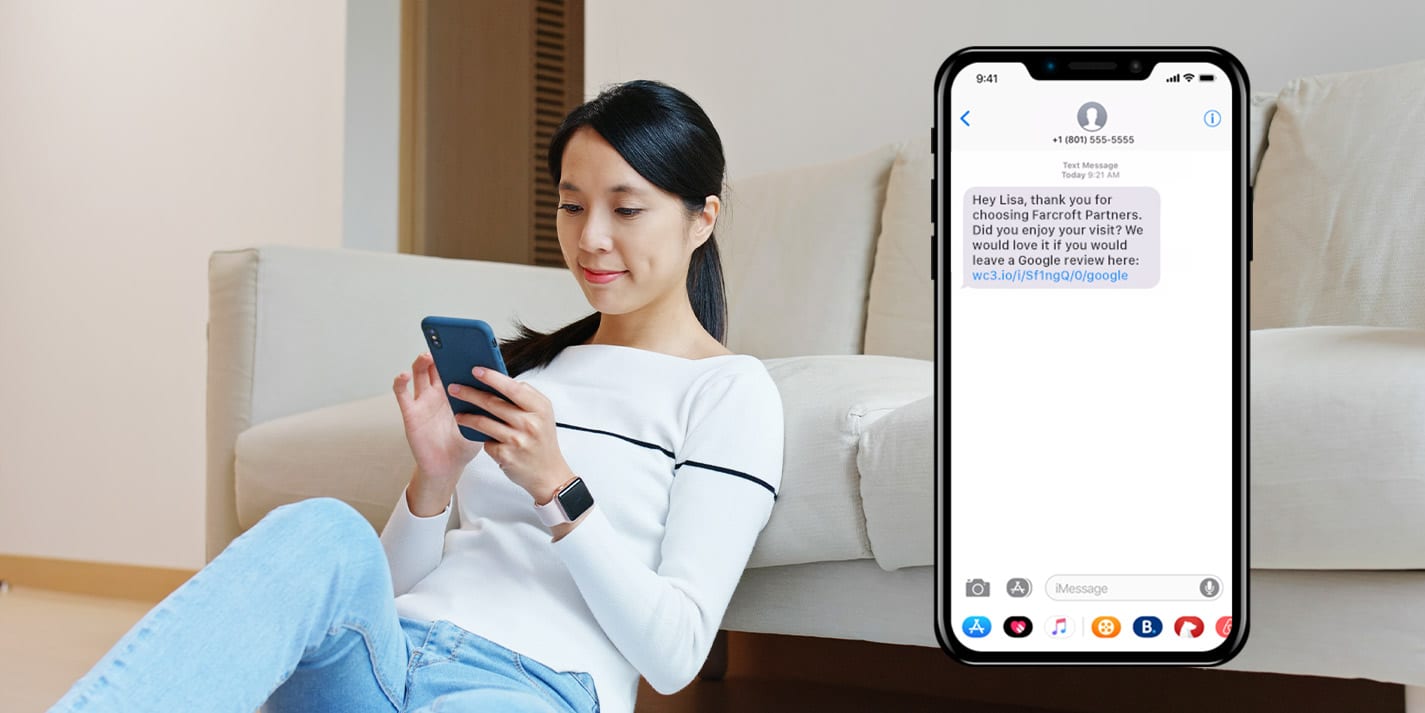
Healthcare Worker Safety: 13 Tips to Apply Right Now
The COVID-19 pandemic has put a renewed emphasis on the safety of healthcare workers. People throughout our society are rightfully championing these workers as heroes for their willingness to continue to provide lifesaving service in the face of a global health crisis. The duty of healthcare practices is to do everything they can to protect these heroes.
Weave recently commissioned a survey of 750 providers and patients in order to better understand how they’re dealing with the challenges imposed by the pandemic. The results indicate some of the best ways to use communication technology to reinforce social distancing protocols in your office.
Here are 13 tips for keeping healthcare workers safe that you can apply right now:
1.Ditch your landline phones
73% of the healthcare practices interviewed said they’re confident they can keep employees healthy at work. Providers have years of experience grappling with difficult circumstances, and their sick or aching clients have always needed safe conditions. Because healthcare workers are exposed to various viruses and illnesses on a daily basis, most providers are sure they can protect their employees from COVID-19.
However, the pandemic has brought some new dimensions to the table. There are government regulations and cultural expectations that offices will guarantee appropriate social distancing. If your office only has landline phones, it makes enforcing proper social distancing significantly more complex. VoIP (Voice over Internet Protocol) phones are internet-based, allowing your team to explore new ways of shielding itself from the spread of disease.

2.Adopt new waiting room procedures
Despite the pressure and occasionally chaotic scenarios presented by the pandemic, many offices say their quality of care has improved. 48% of healthcare providers say their customer service has gotten better due to COVID-19. While it’s crucial to show enhanced care in strange times, it’s also critical that offices match this quality of service with dedication to worker safety.
Practices have altered the way they structure their waiting room in order to protect their employees. Curbside waiting rooms are set up by using a VoIP system to text patients before appointments and ask them to wait in the parking lot instead of in your lobby. Along with this request, providers are sending a wellness form to screen customers before they step into the office. Both of these measures can redirect infected clients to public health clinics, saving your workers from exposure.
3.Convert to text messaging
VoIP phones allow offices to bounce between calls and other forms of communication. 68% of healthcare practices think most of their outgoing communication will happen via text in the next three years. Coincidentally, texting is a great way to encourage social distancing and keep your team from getting exposed to COVID-19.
For instance, texts can work in tandem with your inbound calls. If customers aren’t able to reach your front desk by phone, communication software will automatically send them a missed call text, assuring them that your team will contact them as soon as possible. This type of reinforced communication keeps clients from showing up to your office unannounced, potentially bringing with them germs and viruses.
Get Your Message Across Safely & Efficiently
" During this time with the COVID crisis, it has been nice being able to work from home with the Mobile App and texting capability. Communication has been quick and easy."- Bob Bacci + Bacci & Glinn Phyical Therapy ( Weave Customer)
Schedule Demo4.Control your scheduling by text
Even though most offices are aware of business texting and many use it on a regular basis, only 18% of healthcare practices say they’re using text messaging to its fullest potential. Texting isn’t just useful when you want to have a conversation with patients; it also lets you maintain an orderly schedule and control the office environment.
Scheduling software allows your practice to distribute appointment reminders that let clients know about their upcoming visits. These reminders can be scheduled in advance for specific dates and times. When customers confirm their appointments, sentiment analysis interprets responses and lets your team know about cancellations and rescheduling. Keeping clients on top of their appointments ensures that they won’t rush into your office without following social distancing protocol.
5. Don’t forget about emailing
Calling and texting patients are foundational forms of communication for modern healthcare practices. However, 33% of patients admit to forgetting about calls and texts from providers. They also say that their third-most preferred method of communication with practices is emailing.
Emailing allows you to get vital information about social distancing, office closures, and other safety measures out to your entire clientele base at once. This efficiency will make your patients better informed than relying strictly on calls and texts because emailing enables you to share more detailed descriptions of how your office is handling COVID-19. Email marketing software is now available that professionalizes your email outreach with pre-written templates, images, and Call to Action buttons.
6. Ask for feedback with review requests
Traditionally, healthcare practices have gathered feedback about their services with in-person interviews and written questionnaires. In recent years, providers have also collected feedback with text messages and phone calls. Of these two methods, 38% of patients say they prefer giving feedback by text compared to 24% that would rather respond over the phone.

Based on the preference for text feedback, providers should consider sending online review requests by text. Instead of talking to customers at the front desk following appointments, employees can use communication software to send a request with a link to popular sites like Google and Facebook. This form of gathering feedback is effective as a means of social distancing and building a strong online presence.
7. Make customer insights easy to access
In our survey, 73% of healthcare providers said communication that’s personalized performs better than generic communication. That’s because personalized communication relies on the rapport you’ve built with clients to get their attention and call them to action. Once you’ve captured the attention of customers with personal insights, you can take care of a laundry list of tasks that, like many of the other tips on this list, control the flow of patients into your office.
Controlling how frequently people pop into your office is an effective way to protect employees from COVID-19 threats. Software that connects customer insights with your calls and texts brings medical histories, upcoming appointments, and outstanding balances to your team’s attention. They can clear up a whole series of needed actions with just one call or text conversation.
8. Socially distance with contactless payments
After receiving essential services, patients frequently stop by the front desk to take care of scheduling and payments. This article has already shown how texting can alleviate the need to schedule appointments in-person. We haven’t, however, taken into consideration how alternate payment processing methods can promote social distancing.
73% of healthcare providers say contactless payments support social distancing. Contactless payments include both mobile wallets and text payments. Mobile wallets are available through companies like Google, Microsoft, Apple, and Samsung. Weave offers a feature called Text to Pay that makes contactless payments incredibly simple and secure.
9.Meet the demand for contactless payments
COVID-19 has put pressure on healthcare workers to provide improved service in stressful circumstances. 71% of practices say the pandemic has increased the demand for features like Text to Pay. So, why is a contactless payment method like Text to Pay in high demand?
Text to Pay allows your office to promote social distancing at the end of patient visits in the same way curbside waiting rooms protect employees and clients at the beginning of an appointment. After a visit, customers can forego the usual stop at the front desk. Employees can send payment requests by text that include a link to a payment site.
10. Offer a complete payment platform
For better or worse, some patients will insist on sticking with traditional payment methods, like cash, checks, and cards. That’s why 69% of practices want one complete payment platform. Being able to accept the full gamut of payment options increases your office’s appeal to prospective clients.
11. Transition away from credit cards
Credit cards are ubiquitous in our society, yet 67% of healthcare providers want to transition from primarily processing cards to contactless options. A complete payment platform allows practices to make this transition. Moving away from credit cards means better social distancing and greater protection for your employees.
12. Be more hygienic with Text to Pay
Credit card processing and other conventional payment processing options involve a lot of touching payment portals, exchanging currency, and violations of social distancing. 51% of healthcare practices think Text to Pay is more hygienic than credit card processing. Once your office has a patient’s credit card information on hand, it can take care of all its merchant services using texts rather than physical exchanges.
13. Emphasize growth and safety
Safety for your employees doesn’t have to come at the expense of growth. In fact, high-growth practices are 41% more likely than low-growth practices to emphasize Text to Pay and contactless payments. The pandemic has highlighted how taking safety measures with advanced communication technology is a model for growth in the near future.
If you would like to discover more about how to protect your employees using Weave’s complete business toolbox, contact us today.